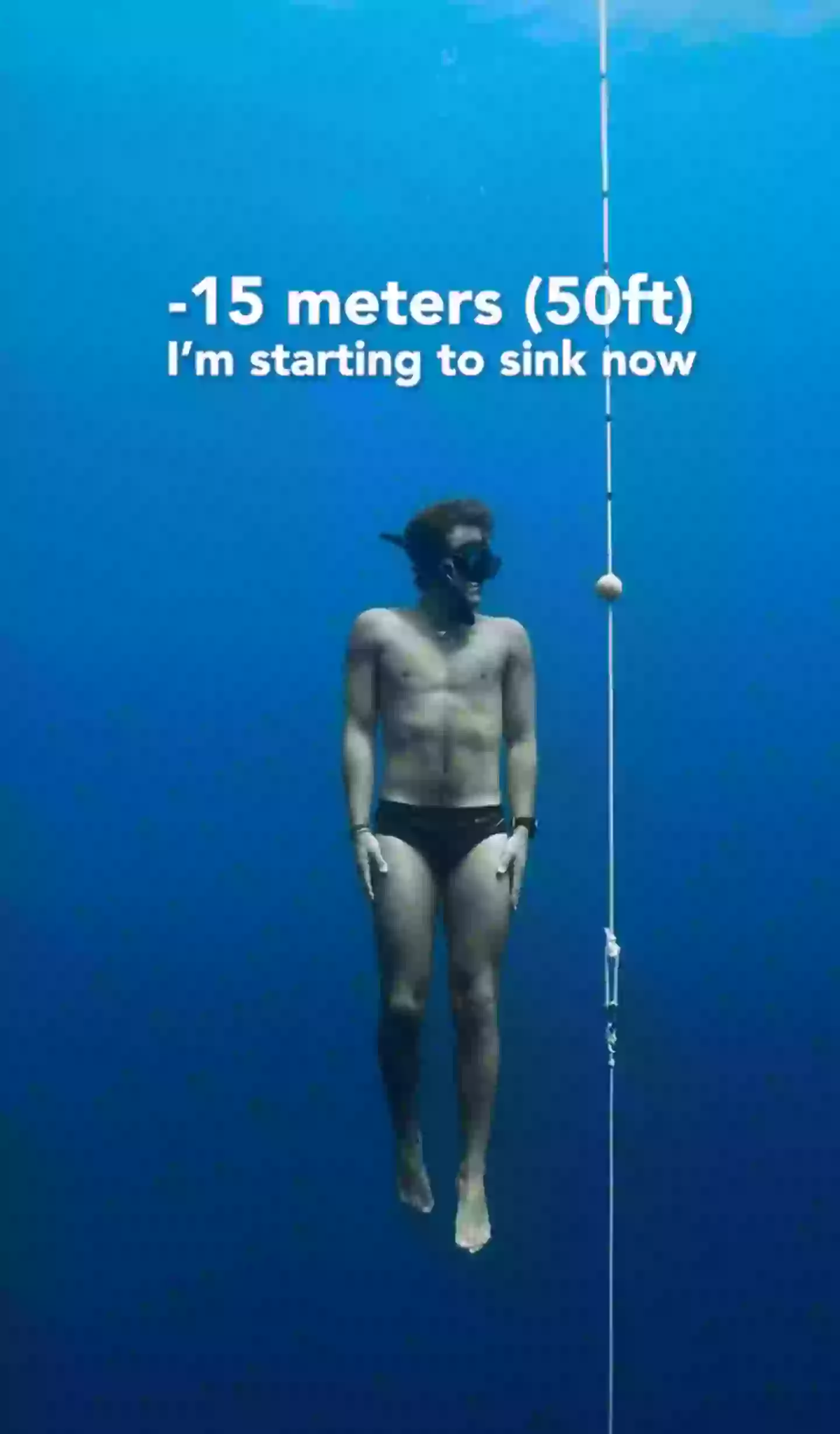A man's terrifying video has explained one brutal reality of the ocean.
Have you ever wondered why freedrivers sometimes find it so difficult to surface?
Some daredevils dive more than 100m (320 feet) below sea level, and getting back to the surface is no joke, as fans of Netflix's The Deepest Breath will know.
The 2023 documentary focused on the tragedy that befell Alessia Zecchini and Stephen Keenan in 2017.
The two ran into trouble during a recreational dive across the Arch of the Blue Hole in the Red Sea, just north of Egypt.
They agreed to meet at -50m as Keenan was a safety diver, meaning he could help Zecchini resurface if she ran out of oxygen.
Keenan dived in 20 seconds later than planned for unknown reasons, with Zecchini lost as she swam astray to find her way up.
He risked his life to save her, bringing her back to the surface, eventually paying the price as he passed away shortly after resurfacing, highlighting the dangers of the extreme sport.
Those who saw the heartbreaking documentary might be wondering why Zecchini and Keenan struggled so much to resurface - but a Reddit video has chillingly put this into perspective.
The diver highlighted how dangerous free diving is as a sport (Reddit) In the video, a free diver chose to demonstrate the dangers of the sport.
Diving up to a depth of -65ft (20m), which is equivalent to a six-storey building, he demonstrated how our body's buoyancy changes, the deeper it goes.
At the start of the clip, he simply asked: "At what depth do I start sinking underwater?"
At -5m (-16ft), he shows that he was 'definitely floating', while at -10m (-32ft), he was still floating but 'a little less'.
He revealed that he was 'perfectly neutral' at -12m (-40ft), starting to sink at -15m (50ft) and 'definitely' sinking at -20m (-65ft).
But why and how does this happen?
It's all to do with physics - basically, when a diver reaches -10m, the pressure is double what it is at the surface, and this increases by one atmosphere every 10 metres, meaning that at the average ocean depth of 3,800m, the pressure on the sea floor is 380 times greater than at the surface.
This is called hydrostatic pressure.
But that's not all, density has a part to play, as the weight of our muscles and fat contributes to making us more dense than water.
The air in our lungs also becomes compressed as we go deeper, making us less buoyant, and as explained earlier through hydrostatic pressure, we become more negatively buoyant as we go deeper, meaning we descend quicker.
This diver's video gives social media users an insight into how dangerous free diving can be, and possibly how Stephen Keenan, a seasoned professional, could fall foul to the unforgiving conditions of the sport.

 Joshua Nair
Joshua Nair